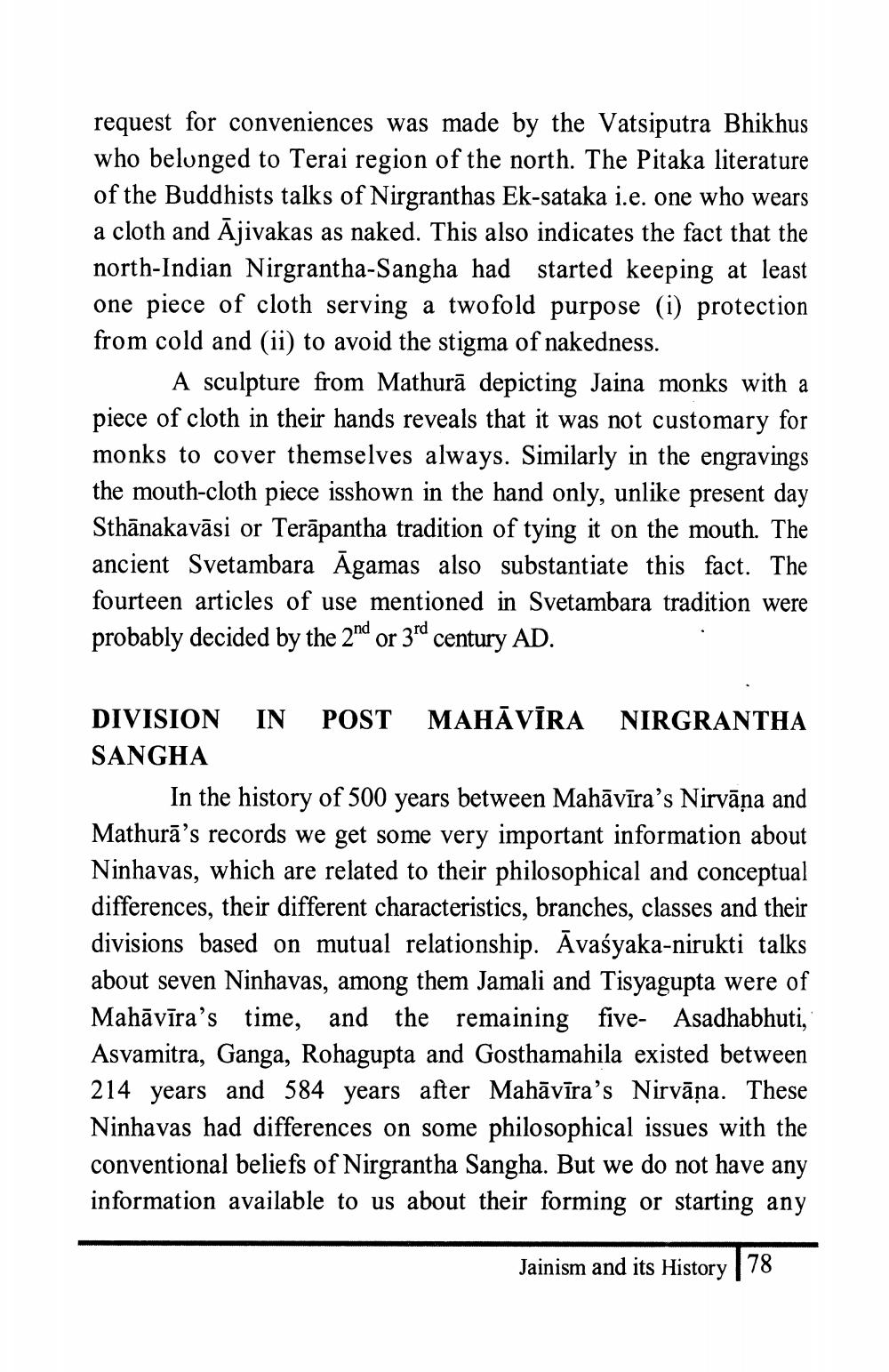________________
request for conveniences was made by the Vatsiputra Bhikhus who belonged to Terai region of the north. The Pitaka literature of the Buddhists talks of Nirgranthas Ek-sataka i.e. one who wears a cloth and Ājivakas as naked. This also indicates the fact that the north-Indian Nirgrantha-Sangha had started keeping at least one piece of cloth serving a twofold purpose (i) protection from cold and (ii) to avoid the stigma of nakedness.
A sculpture from Mathurā depicting Jaina monks with a piece of cloth in their hands reveals that it was not customary for monks to cover themselves always. Similarly in the engravings the mouth-cloth piece isshown in the hand only, unlike present day Sthānakavāsi or Terāpantha tradition of tying it on the mouth. The ancient Svetambara Āgamas also substantiate this fact. The fourteen articles of use mentioned in Svetambara tradition were probably decided by the 2nd or 3rd century AD.
DIVISION IN POST MAHĀVĪRA NIRGRANTHA SANGHA
In the history of 500 years between Mahāvīra's Nirvāṇa and Mathurā's records we get some very important information about Ninhavas, which are related to their philosophical and conceptual differences, their different characteristics, branches, classes and their divisions based on mutual relationship. Āvaśyaka-nirukti talks about seven Ninhavas, among them Jamali and Tisyagupta were of Mahāvīra's time, and the remaining five- Asadhabhuti, Asvamitra, Ganga, Rohagupta and Gosthamahila existed between 214 years and 584 years after Mahāvīra's Nirvāṇa. These Ninhavas had differences on some philosophical issues with the conventional beliefs of Nirgrantha Sangha. But we do not have any information available to us about their forming or starting any
Jainism and its History 78




